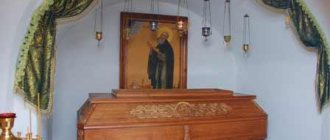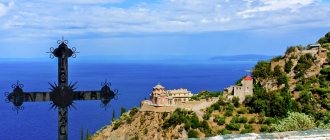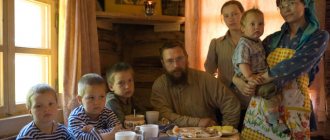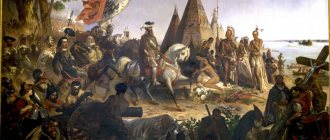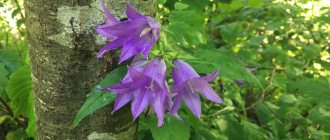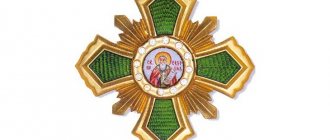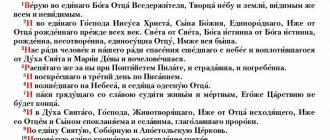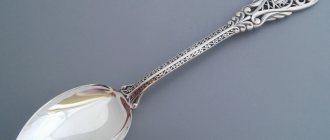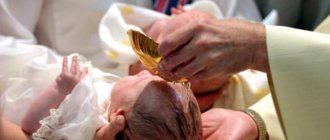| Cathedral of Holy Serbian Educators and Teachers. Icon (XX-XXI centuries). |
The Cathedral of the Holy Serbian Educators and Teachers
(in Russian practice is also briefly referred to as
the Cathedral of the Serbian Hierarchs
) - the cathedral memory of the holy shepherd leaders of the Serbian Church. Celebrated on August 30
The celebration of the Council of the Holy Serbian Educators and Teachers was conciliarly established in Sremski Karlovci in 1769 [1]. The service to the Council is usually attributed to Metropolitan Michael (Jovanovic) of Belgrade, although parts of it were probably compiled earlier [2]. The service was first published in the publication of Serblyak,
1861 and reprinted without any special changes in
Serblyak
1986.
The list of saints glorified in the service in the most condensed form is presented in the following prayer appeal (see the praise book on “Lord, I cried” of Great Vespers): Serbian saints of enlightenment and teaching: Simeon the myrrh-streamer, Savvo Equal to the Apostles, Arseniy the Wonderworker, Savvo the Second with Ioannikios, Eustathius and Jacob the wise, the most praised Nicodemus, Daniel, Ephraim, Ioanniki with the wonderful Spyridon;
the glorious Savvo the third with Gregory the God-bearing; wonderful Cyril, John, Nikon, Macarius with the righteous Maxim, for all you are servants of blasphemy and faith, and good workers of the grapes of Christ [3].
The official calendar of the Russian Orthodox Church presents a slightly abbreviated list of the Council [4], which includes:
- St. Sava I, Archbishop. (+1237)
- St. Arseny I, Archbishop. (+1266)
- St. Sava II, Archbishop. (+ 1271)
- St. Eustathius I, Archbishop. (+ approx. 1285)
- St. Jacob, archbishop (+1292)
- St. Gregory, bishop Rashsky (+ beginning of the 14th century)
- St. Nicodemus, Archbishop (+1325)
- St. Daniel II, Archbishop. (+1338)
- St. Ioannikios II, Patr. (+1354)
- St. Ephraim, Patr. (+ after 1395)
- St. Spiridon, Patr. (+1388)
- St. Macarius, Patr. (+ 1574)
- Sschmch. Gabriel I, Patr. (+ 1659)
In addition to these saints, the full list mentioned in Serblyak
also includes:
- St. Simeon the Myrrh-Streaming (+ 1200)
- St. Ioannikis I, Archbishop. (+ 1279)
- St. Sava III, Archbishop. (+1316)
- St. Cyril I, Patr. (+1418/1419)
- St. Nikon, Patr. (+ approx. 1435)
- St. John, Patr. (+ 1614)
- St. Maxim Skoplyanets, Patr. (+1680)
| Cathedral of Serbian Saints. Fresco (XXI century). Church of the Annunciation of the Herzegovina Gracanica Monastery. Trebinje, Republika Srpska. |
Due to the fact that in the modern Serbian language the word “saint” ( svetiteљ
) has come to be used in the sense of “saint,” the short name of the celebration - the Council of Serbian Saints (
Sabor srpskikh svetiteja
) - means “the Council of Serbian Saints”. This understanding is enshrined in the iconographic plot depicting a host of Serbian saints of different faces of holiness and signed in Serbian “Sabor of the Serbian luminaries”.
Who was Saint Sava?
Sava was the youngest son of Stefan Nemanja and Anna Nemanjic, the crowned family of the Principality of Serbia, the founders of the Nemanjic dynasty. He was born in 1169 and his name was Rastko. And the biblical style is just appropriate here, but more on that below...
Modern Montenegro can be called the birthplace of Saint Sava. He became the third and most long-awaited child in the family, and therefore the most beloved. Little is known about Rastko's early years, but when he turned 15, his father gave him control of one of the regions of his principality. It is known that Rastko did not visit her often. He was an educated young man, familiar with early Christian, Byzantine and Old Slavonic literature. The time came, and he fled to Athos. At that time he was about 17 years old.
On the Holy Mountain, he found refuge in the Russian Monastery of St. Panteleimon, where he became a monk, receiving the name Savva (according to another version, it was the Greek monastery of Vatopedi, in which he lived for the next seven years, but this is less likely).
Surprisingly, after some time his father, having ceded the throne to his middle son, also Stephen, took monastic vows, and even later he responded to Savva’s offer to come to Athos, where his son became his spiritual mentor. The resignation of a worldly ruler to become a monk is an extraordinary event; it aroused unprecedented interest not only in Stefan Nemana, who became Simeon, but also in Savva himself.
Church of St. Sava today
Since 2015, Rossotrudnichestvo has been the general coordinator of the work on decorating the interior of the Church of St. Saava in Belgrade. In 2016, she donated 4 million euros for work on the central element of the dome - the mosaic panel “The Ascension of Christ” with an area of 1,248 square meters. The team of Russian masters was led by People's Artist of Russia Nikolai Mukhin.
In 2022, she promised to donate another 6 million euros. The money went to finance the work on decorating the altar of the cathedral.
At the time of writing in January 2022, access to the Church of St. Sava is still limited. You can get inside through the northern gate (there are three entrances in total), but you cannot go beyond the church benches and several icons. But access to the church crypt is open.
The height of the crypt walls is 7 meters. Its main goal is to remind believers of those who have become role models for Orthodox people. Various saints are depicted on the walls of the crypt, mostly revered by the Serbian Orthodox Church. But there are also Russians. For example, Saint Nicholas Romanov is the last Russian emperor. The ashes of the Serbian patriarchs, who contributed to the strengthening of Orthodoxy, were supposed to be transferred to the crypt. But whether they did this, I couldn’t find any information.
Currently, sacred music concerts, church exhibitions, and so on are organized in the crypt.
Despite its size, the Temple of St. Sava is not the main church in Belgrade. Belgrade Cathedral is located near Kalemegdan Park and Belgrade Fortress. It is called the Cathedral of St. Michael the Archangel (Saborna Tsrkva St. Michael the Archangel).
Infrastructure around the temple
In front of the temple there is a landscaped park (Karađorđev park) with flower beds, children's playgrounds, benches and drinking fountains. Every January, a Christmas market opens in the park in front of the church.
A bronze sculpture of Saint Sava was installed at the northern entrance to the temple. And here it could not have happened without the Russians. The monument was presented to the Russian Foundation of St. Andrew the First-Called, and its author is the Russian sculptor Vyacheslav Klykov.
Nearby stands the Church of St. Sava, built at the end of the 19th century and expanded at the beginning of the 20th. During the First World War, the church bells were melted down for military purposes. In 1935, when construction of the monumental Church of St. Sava began next door, they decided to rebuild the church and make it more representative. Despite this fact, the Church of St. Sava is lost against the background of its powerful neighbor, so little attention is paid to it.
Also on the Vracar Hill plateau stands the Parish House and the National Library of Serbia.
Hilandar and SPC
Hilandar is a Serbian monastery that ranks with such Serbian shrines as Vysoki Dečani in Kosovo and Ostrog in Montenegro, but Hilandar is located on Mount Athos, and it was founded by Sava and Simeon. Hilandar became the first and remained the only Serbian Orthodox monastery on the Holy Mountain.
However, then he was simply “Serbian,” and he became “Serbian Orthodox” when Sava achieved autocephaly for the Serbian Orthodox Church from the Byzantine king Theodore I Laskaris and the Patriarch of Constantinople Manuel I Charitopulus Sarantino. At the same time, the monastery remained subordinate to the Patriarchate of Constantinople. But this is not the main thing, the main thing is the new, independent Serbian Orthodox Church.
In 1234, Saint Sava undertook a second pilgrimage to Jerusalem. On my way back I passed through Bulgaria. There he died on January 14, 1236 and was buried in the Bulgarian capital of Tarnovo. Nephew of St. Savva, the Serbian king Vladislav (son-in-law of the Bulgarian king Ivan II Asen), a year later transferred his relics from Tarnov to the Milesheva monastery. Three hundred years after the death of the saint, the Turks, who enslaved the country, burned the relics of Saint Sava in order to humiliate the people and their shrines. Now one of the largest Orthodox churches has been built on this site.
This happened after the fall of Constantinople in 1204, when Manuel I ordained Savva as “archbishop of the Serbian and coastal lands.”
Returning to Serbia, Savva began to found monasteries and laurels and write legislative texts. His Life of Simeon is now considered an example of Serbian medieval literature. Being the abbot of the most important monastery of Studenica in Serbia at that time, Savva also participated in the diplomatic missions of rulers from his family, namely brother Stefan Nemanjic.
Orthodoxy in Serbia: from Saint Sava to the “Glory of the Cross”
The educational works of Saints Cyril and Methodius, in particular on the translation of liturgical texts from incomprehensible Latin into the Slavic language, contributed to the Christianization of the Balkan peoples. St. St. completed the work of their teachers. Clement and Naum on their migration from Moravia to Ohrid (Czech Republic and Macedonia - author's note). Through their efforts, Slavic writing, culture and monasticism began to actively develop in the Balkans from the 9th century.
Cathedral of Serbian Saints
One of the features of Serbian Orthodoxy was the fact that the country, which is relatively small in territory and population, gave the Orthodox world many great saints. It is noteworthy that many ascetics of piety belonged to the highest nobility. Power and wealth, which for many would have become temptation and destruction, were used by the pious princes and kings of Serbia for the noble service of God and neighbor.
On the icon of St. Simeon the Myrrh-Streaming, in the world of Prince Stefan Nemanja, who ruled Serbia in the 12th century, the genealogy of the holiness of his family is depicted in the form of grape branches. This saint is called the “vine of Serbian piety”, from whom righteous descendants descended, starting with his beloved son Rastko, who later became the great saint Sava of Serbia. In the Nemanjić royal family alone, four people were canonized as ascetics!
The Orthodox Church honors the Council of Serbian Saints on August 30 (September 12 n.st.).
History of a Christ-loving people
The Serbian Orthodox Church (SOC) acquired the status of autocephaly (Greek “auto” - itself, “mullet” - head) thanks to the aforementioned Saint Sava of Serbia in 1219, when Patriarch Manuel I of Constantinople ordained the monk Sava Nemanjic to the rank of archbishop. The independence of the Serbian Church was granted at the request of St. Savva due to the Pope's strengthening of Catholic influence in the Balkan lands.
Having received broad powers to organize the Church, Saint Sava founded eight new dioceses, in which he appointed his disciples, the best ascetics of Hilandar and Studenica, as bishops. The traditions and regulations of Athos, the monasteries of Palestine and Asia Minor were introduced into the life of Serbian monasteries.
Another important event, both spiritual and political, was the coronation of Stefan Nemanja as the head of Serbia by his brother Saint Sava. This is how the Nemanjić dynasty and the national identity of the people were strengthened. Since then, in the history of the country and the Church, King Stephen, glorified as a saint, has been referred to as the First Crowned.
The center of spiritual life in Serbia for a long time was located in the Žić Monastery. The archbishop's residence was located there and local councils of the Serbian Church met there, in which all the bishops, abbots and many priests took part.
In 1346, King Stefan Dusan of Serbia convened a Church Council in Skopje, at which the Serbian Church was elevated to the rank of Patriarchate, and the patriarchal residence moved to the city of Pec. The first Serbian Patriarch was Ioannikis II.
In those years, Serbia and its neighboring countries suffered from raids by the Turks, who sought to conquer the Balkan lands.
In 1389, on June 15 (old style), a battle between the Serbs and the Ottomans took place on Kosovo Field, which became a key event in the further history of the country and the church. According to legend, before the battle, an Angel of God appeared to Saint Prince Lazar and asked him to make a difficult choice: “The Lord will grant him victory in this battle, but the independence of Serbia will last until the death of Lazar, and then the country will be conquered. Or the princely troops lose, but Orthodoxy in Serbia will survive until the end of time.” And the holy prince considered that preserving the faith was more important than a temporary victory, choosing the kingdom of heaven instead of the kingdom of earth. On the eve of the battle, all the soldiers received Holy Communion. As predicted, the Turks defeated Lazarus’s army and won.
Why were the Serbs faced with such a cruel dilemma? Historian and writer Marko Marković, in his book Serbia as an Apology for Russia, answers: “Redemption was required. So many sins had accumulated in the soul of the Serbian people that they could only be redeemed and cleansed through a bloody sacrifice. The battle on the Kosovo field is likened to the Divine Liturgy, at which, together with Prince Lazar, the entire Serbian nobility is offered for the entire people. Washed by the blood of the Kosovo heroes and martyrs who likened themselves to Christ, the Serbian people are sanctified and become a Christ-bearing people. And whoever suffers with Christ is saved with Christ.”
This day entered the history of Serbia as the holiday “Vidovdan”, celebrated annually by all Serbs on June 15 (28).
The country found itself under the brutal rule of the Turks for almost five centuries. For several centuries the Patriarchy was abolished. But the Orthodox faith was alive, despite the fact that the Mohammedans tried in every possible way to eradicate it: they turned churches into mosques, forcibly converted Serbs to Islam, and subjected the most persistent Christians to torture and death.
As the Balkan peoples were liberated from Turkish expansion, faith began to be revived. Autocephaly of the Serbian Church was restored in 1879.
Another historical milestone - a year after the creation in 1918 of the Kingdom of Serbs, Croats and Slovenes (since 1929 - Yugoslavia), the churches of the countries of Serbia, Montenegro, Macedonia, Albania, the lands of the former Austria-Hungary, Bosnia and Herzegovina, Croatia, Slovenia united into a single Serbian Orthodox Church.
And the flourishing of Serbian Orthodoxy began. He was greatly assisted by support from the state, as well as Russian emigrants - the best representatives of the clergy, culture and science, in gratitude to the Serbs for salvation and hospitality, enriched the country with knowledge, spirituality and other fruits of their activity. For example, they brought the ballet to the Belgrade National Theater. The capital buildings of the Government, the Patriarchate and the Church of the Holy Trinity, referred to by Belgrade residents as the “Russian Church”, were designed by architects from Russia.
The Second World War became the most tragic and bloody page in the history of Serbia of the twentieth century. Mass closure and destruction of churches and monasteries began. In addition to the persecution of the Church, during the years of German occupation, a monstrous genocide of the Serbian people unfolded on the part of not only the Germans, but also the Ustasha (Croatian revolutionary movement, ultra-right pro-fascist nationalist organization). The latter's cruelty towards the Serbs shocked even the Germans.
The subsequent reign of godless communists under Broz Tito from 1945 to 1990 led to a struggle against religion.
During this difficult time, the Lord revealed not only Serbian, but also world Orthodoxy, two righteous people - Bishop Nicholas (Velimirovich) of Zhich and Ohrid, widely known as St. Nicholas of Serbia and St. Justin (Popovich). Their personal Christian feat and unique theological talent helped millions of Christians strengthen their faith “in the darkness of godlessness,” which engulfed not only the Balkans, but also the progressive West and America, which boldly called themselves “post-Christian countries.”
After the fall of the communist regime in 1990, Serbs returned to their religious roots.
A huge role in strengthening the Church was played by the Serbian Patriarch Paul, whom the Serbs reverence as a holy man and call him “the angel of the Serbian Church” for his peacemaking and pastoral works (on the restoration and founding of dioceses, as well as the preservation of the country’s shrines), amazing modesty and non-covetousness.
The resumption of construction of the Church of St. Sava of Serbia, the largest not only in Serbia, but also in the world, became a symbol of the revival of Orthodoxy on Serbian soil.
The phenomenon of “Svyatosavviy”
In Serbia, for many centuries, such a unique phenomenon as “Svyatosavvie” has existed everywhere - the political, religious and cultural way of life of the Serbs, based on the unity of the people around the veneration of St. Sava of Serbia. Svyatosavvie is the second name of Serbian Orthodoxy.
The Monk Justin (Popovich) stated:
“Without Svyatosavvy, without Orthodoxy, the Serbs are nothing more than a corpse on a corpse, a dead man on a dead man. Only by the Holy Sasian faith and St. Sasavian life do the Serbs show and prove that they are real Serbs...”
Saint Sava's Memorial Day is a universal Serbian holiday called “Savindan”, which is celebrated on January 27 (in the Russian Orthodox Church on January 25 - author's note). Particularly pious Serbs even hold a fast on the eve of the holiday, called “savica”.
In Serbia, Saint Sava is considered the patron saint of schoolchildren and students, and Savindan is officially declared a day off in all educational institutions.
Many institutions and geographical objects are named after the popularly beloved saint.
Who is being glorified for “Glory”?
Glory of the Cross is a unique holiday that is celebrated specifically in Serbia and is included in the “UNESCO intangible cultural heritage.” Each family has its own heavenly patron. His Glory is passed down from generation to generation through the male line. Unmarried girls glorify the saint of the family into which they were born - on their father's side. Having entered into marriage, women already honor the Glory of their husband.
The Serbs owe the emergence of this family-religious tradition to their popularly beloved saint, Saint Sava of Serbia. At that time, paganism was still alive in the country. The pagan Serbs had a family patron deity of the clan. The wise Saint Savva did not call for a complete abandonment of the holiday. Having preserved the family day, he filled it with deeply Christian content - the archpastor invited the newly baptized Serbs, instead of a pagan idol, to choose any Orthodox saint for their family as a patron.
As Glory, the Serbs annually honor saints who especially helped them during their lifetime or on whose memorial day their ancestors were once baptized.
Historians count more than seventy Glory of the Cross. The most common of them are in honor of Serbian saints, as well as Arandzhelovdan (Archangel Michael), Jovandan (Cathedral of John the Baptist), Nikoldan (St. Nicholas the Wonderworker), Mitrovdan (Great Martyr Demetrius of Thessaloniki), Ilindan (Prophet Elijah), Djurdjevdan (Great Martyr George) and etc.
Moreover, in addition to family Glory, Serbs honor the Glory of temples, monasteries, as well as the country, native village or city, and even institutions that have their own heavenly intercessors.
Universal for Serbia and every Serb is the Glory of the Cross, called Savindan, when the church honors the memory of St. Sava of Serbia.
Surprisingly, it was largely thanks to the Glory of the Cross that faith was preserved in Serbia during the times of its cruel persecution. The Ottomans did not completely prohibit this holiday, but they limited it in many ways, forcing the Serbs to abandon the religious component. At one time, a Muslim Turk was always present at the celebration, who controlled what was happening. Resourceful and witty Serbs came up with the idea of clinking glasses with each other in the shape of a cross in honor of the saint. And as a treat, they offered guests a variety of dishes made from pork, which is forbidden among Muslims. The Turks sat sadly at a lively table, which they could not touch, and soon stopped visiting Slava, to the delight of the Serbs.
This wonderful holiday was subjected to severe persecution and prohibitions during the reign of the communist and dictatorial regime of Broz Tito, a Croat by nationality. The communists behaved worse than the infidels: for celebrating the Glory they could be fired from their jobs or even deprived of their civil rights.
The celebration of the Glory of the Cross was resumed in the country after the change of atheistic authorities in the 90s.
According to tradition, the family prepares carefully and in advance for Glory. The day before, a priest is invited to the house: he blesses the house and water. Using consecrated water, the housewife kneads and bakes Slavic kalach, and cooks delicious kolivo - wheat with honey, candied fruits, and raisins.
On the holiday, the whole family goes to church to partake of the Holy Mysteries of Christ. They also consecrate kalach, kolivo and red wine, with which the meal begins at home.
Serbs are incredibly hospitable. It is at the Cross Glory that you fully feel their hospitality. Relatives and friends come to visit at any time. You will certainly be treated to such traditional dishes as “Russian salad”, similar to “Olivier”, and sarma - cabbage rolls made from pickled cabbage or grape leaves. Even the Lenten “Slavic” treat, not to mention the fast one, amazes with the abundance of pickles. Like a small wedding!
Name days are not usually celebrated in Serbia, although there is a name for them - Imendan.
Spiritual connections between Russians and Serbs
Another feature of Serbian Orthodoxy is its close connection with Russia and Russian piety.
It all started again with the birth of Saint Sava of Serbia - the founder of Serbian Aftocephaly, the greatest ascetic, theologian, preacher and peacemaker. The original secular name of the future saint was Rastko/Rastislav with the root “ras”. In the year of the birth of the future ascetic, the Athonite Monastery of St. Panteleimon, where Savva would later take monastic vows, was transferred to the Russian Church. The desire for monasticism arose in the soul of the young prince under the influence of Russian monks who often visited his father’s house. It is noteworthy that Saint Sava is the first Serbian saint who began to be venerated by the Russian Orthodox Church.
The capital of Serbia during the reign of the Nemanjic dynasty was the city of Ras. Its inhabitants were called "Raseans". Since then and to this day, the historical state of Raska has existed in the southwest of Serbia.
The friendship of the two fraternal peoples was further strengthened in the twentieth century, thanks to the intercession of the last Russian Tsar. Perhaps the Serbian people, like no other, even more than the Russians, truly love and honor the holy passion-bearer Nicholas Romanov, who, contrary to political calculations, at the call of his heart in 1914, stood up for Orthodox Serbia. He realized that a small country itself was not able to withstand its strongest opponents - Prussia and Austria-Hungary. By the way, at that time the West called Serbia nothing more than “small, proud and rebellious Russia.”
Saint Nicholas of Serbia, who deeply loved Russia, called the emperor “Russian Lazarus”:
“The Russians these days have repeated the Kosovo drama. If Tsar Nicholas II had clung to the earthly kingdom, the kingdom of selfish motives and petty calculations, he would, in all likelihood, still be sitting on his Throne in Petrograd today. But he clung to the Kingdom of Heaven, to the Kingdom of heavenly sacrifices and gospel morality; because of this, he himself and his children, and millions of his brothers, lost their heads. Another Lazarus and another Kosovo! This new Kosovo epic reveals new moral wealth of the Slavs. If anyone in the world is capable and must understand this, then the Serbs can and must understand it...”
It’s not for nothing that the Serbs are so fond of repeating their saying: “There are 300 million of us with the Russians, but without the Russians there are half a truckload.”
You can applaud the author (at least 10 times)19
